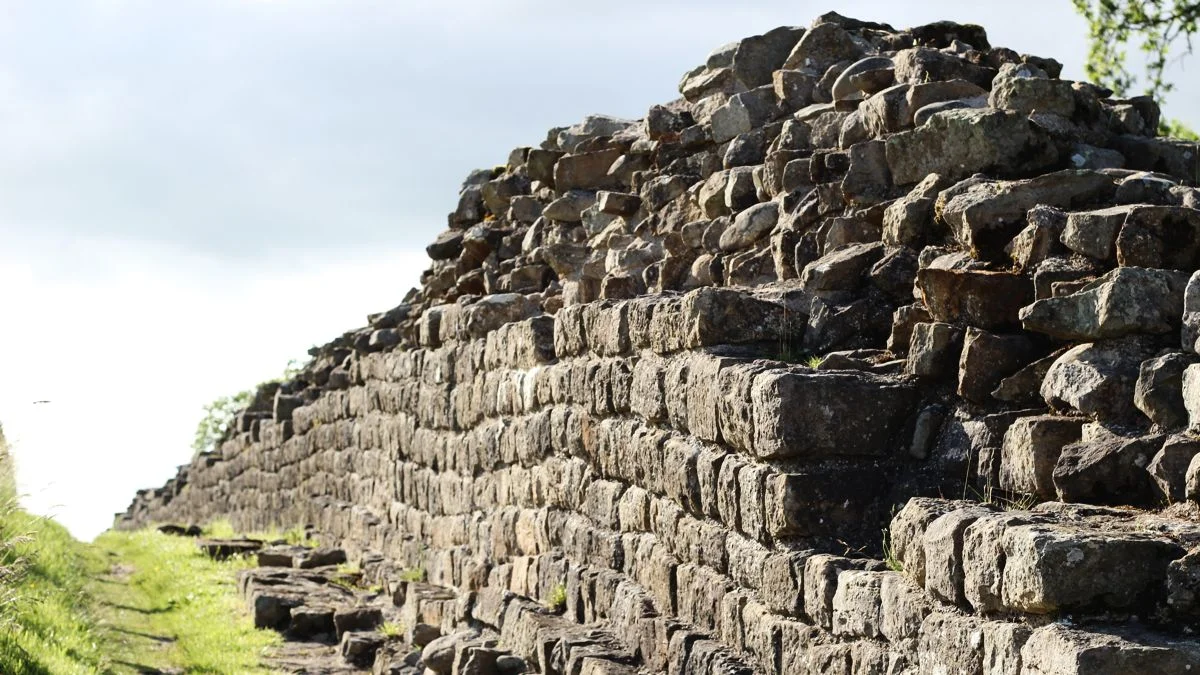The Tower of London (And More).
Paint, Armor, Murder, Theater, Bridges.
Even though our Royal London Walking Tour was over, we just kept going. We walked across the Thames to check out a little of what the southern side of London’s famous river had to offer the world traveling family.
London Eye
London is relatively flat, so it's easy to spot the the London Eye, a giant, slow-moving Ferris wheel on the south bank of the River Thames that looms large on the London skyline.
London Eye
Earlier in our trip, we had every intention of riding the London Eye. We passed on the Melbourne Star and the Singapore Flyer with the understanding that we’d ride the Eye when we got to London. But when we arrived and stood there looking up, the desire to ride it sort of faded. Plus we didn't want to spend the £80. It is quite a spectacle though. Instead, we walked over to Leake Street.
Leake Street
Better known as the Banksy Tunnel (or the Banksy Toilet because of how it smelled) or Graffiti Tunnel, it’s about 300 meters of road under Waterloo Station that’s covered (and re-covered) by street art murals.
Some art in the Banksy Tunnel
The whole idea started way back in 2008 during the “Cans Festival” organized by mysterious and popular and enigmatic street artist Banksy. And here we are, seven years later, and the graffiti artists are still going strong.
Plying the trade ...
There was some really great street art along the length of this somewhat abandoned stretch of road, and it reminded us a lot of the street art scene in Melbourne (although, unlike Melbourne, the artists hanging around Leake Street seemed to be a little angry that we were there checking out their work).
From Leake Street, we ate some dinner and took a ride on the Underground back to our London flat. Then, the next morning, we got back on the Underground and rode it up to the north bank of the Thames, heading off to meet some friends from Los Angeles at the Tower of London. On the way there, we walked right past The Monument.
The Monument
Billy, our guide during our Royal London Walking Tour told us about The Monument (yes, that’s what they call it), a tall tower that stands in remembrance of the Great London Fire that raged through the city for three days in September 1666.
They say The Monument, which was erected in 1677, stands on the edge of where the fire was stopped and if it were to fall in just the right direction, it would land exactly where the fire started.
Billy told us that walking up The Monument’s 311 steps to look out over the city of London was worth the trip and the view is almost as good as what you get from a ride on the London Eye. We could have climbed it for £12 (which a lot less than a ride on the London Eye), but we had people to meet at the Tower of London so we had to pass — for now.
Tower of London
The funny thing about the Tower of London is that it’s not really a tower. Nor is it in the City of London. But it is a UNESCO World Heritage Site bearing the unusually short (for a UNESCO site anyway) name of the Tower of London.
The Tower of London. Not a tower. Not in the City of London.
The Tower of London is located in the borough of Tower Hamlets (which is just to the east of the City of London) and is a fortress consisting of many towers, castles, keeps, barracks, and the walls that surround the whole thing.
It’s been around since the Norman Conquest of 1066, and the interior is filled with all sorts of historical relics from that period through the present day — the most impressive of which are the Crown Jewels.
The Waterloo Barracks — this way for the Crown Jewels
Of course we had to go see the Crown Jewels. And they were pretty cool, if a bit extravagant perhaps (but that’s okay because, you know, Crown Jewels and all). No photos were allowed, of course (there is a gallery here, though), but I can say that there were a lot of sparkly jewels and many items of shiny gold on display behind glass cases. There were a few paintings and tapestries, too.
Ravens of the Tower
It’s a firmly held belief that if ravens are not kept at the Tower at all times, England will fall. So there are always at least six ravens roaming around the place — although we only ever saw two at once — and these ravens are actually soldiers that have been enlisted into the British army.
Queen's Guard and a Raven on Tower Green
Why do the ravens stay there? Magic? A burning urge to serve the crown? No, there’s nothing mystical or dutiful about it — each raven has the flight feathers on one of its wings clipped. Don’t feel too badly for them, though, they’re treated like royalty.
Tower as Prison
The tower was also used as a prison until 1952. The Tudors, mainly Henry VIII, used it to house troublesome and traitorous subjects of the crown.
The Tower of London was also a prison.
There’s a whole tower of the Tower, called the Beauchamp Tower, just off Tower Green, that stands as a monument to the many prisoners who were housed at the Tower. Inside the Beauchamp Tower, you can still see many examples of graffiti carved into the sandstone walls by the prisoners held there.
The Royal Menagerie
The tower was also, for a time, the greatest zoo in London. It was started by King John (the Magna Carta guy) in 1204. People could visit the menagerie for a small fee (admission was also allowed if one presented a dog or cat that would be fed to the lions or bears).
Monkeys ruin everything.
The place was the main zoo for London until 1831 when, after too many attacks on visitors, the animals were transferred to the London Zoo in Regent’s Park.
The White Tower
The White Tower, which is the central keep that was built by William the Conqueror (who was known as William the Bastard before he conquered England) in 1078, is where most of the antiquities are kept, and the most spectacular of these is the Line of Kings, a chronological display of many different weapons and suits of armor worn by former kings of England and their horses.
The armor of King Henry VIII. No comment.
The Line of Kings, which has been a feature of the tower for more than 300 years, takes up a whole floor of the White Tower. In the end, as cool as it was to see some of the actual arms & armors worn by former kings and knights of England, I still prefer the displays in the Wallace Collection.
Murder in the Tower
King Edward IV died in 1483, and his two sons, Edward V (the crown prince, age 12) and Richard (age 9) fell into the care of another Richard, the Duke of Gloucester, who was Edward IV's brother and the Lord Protector of the Realm (yeah, the names and titles get a little confusing).
So Edward V, the eldest of the two boys, was supposed to be crowned King of England, but instead his uncle (Richard, the Duke of Gloucester) took the crown for himself as Richard III (said to be the most despised monarch in British history) and the boys disappeared, never to be seen again.
The common belief is that Richard III had them executed in the tower, and this theory received a little more credence in 1674 when a wooden box was discovered, buried in the tower, that held two two small skeletons.
Inside the one of the towers in the Tower, we watched a cool animated short that tells the story of the princes. And lucky for you, you don't have to travel to the Tower of London to see it. You can watch it right here:
As for Richard III, he only ruled for two years before Henry Tudor led a rebellion against him and defeated him at Bosworth Field. Henry Tudor was then crowned Henry VII and, eventually, fathered Henry VIII.
As we left the Tower, we walked past the Traitor's Gate, a notorious entrance that was used to bring many enemies of the Tudors into the Tower after they'd traveled across the Thames by boat. What happened to most of them after that wasn’t pretty.
Traitor’s Gate
And then we left the Tower. After a short stop for Pimm’s break, we crossed back to the south bank to visit the Tate Modern for a little artistic culture (pictures, again, not allowed). On the way to the Tate, we walked past the Globe Theater, where William Shakespeare (that guy from Stratford) and his band of merry actors, known as Lord Chamberlain’s Men, started putting on plays in 1599.
Globe Theater
What stands today isn’t the original Globe Theater — it’s actually the third, built in 1997. The first, which was built about on a spot about 200 meters away from the modern version, burned down in 1613 as Henry VIII was being performed. In any case, it was immediately rebuilt and the second building lasted until 1642 when it was closed permanently by Puritans.
Bridges of London
London has many bridges over the Thames. The most famous visually is probably Tower Bridge that leads from London City Hall and Potter’s Field Park over the Thames right to the Tower of London.
Tower Bridge over the Thames
But the most famous by name is, of course, London Bridge, which connects Southwark (on the south bank) to the City of London, on the north. And, as you can see, it’s not falling down.
London Bridge
And of course, we can’t forget about Millennium Bridge, a pedestrian-only bridge that’s been open since 2000 (hence the name) that connects the Tate Modern on the south bank to the City of London proper — and St. Paul’s Cathedral — on the north bank.
Millennium Bridge leading to St. Paul's.
Greater London is a massive, sprawling metropolitan area, and we saw a lot more of it than we cover here. But this entry is already might long, so we’ll continue our London adventuring in another post ...
Header image: Detail of a dragon holding the seal of the City of London.

Tom Fassbender is a writer of things with a strong adventurous streak. He also drinks coffee.


























